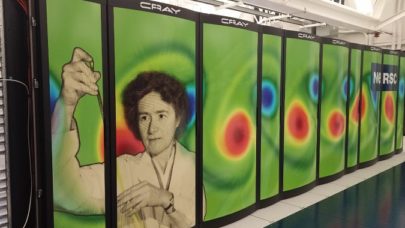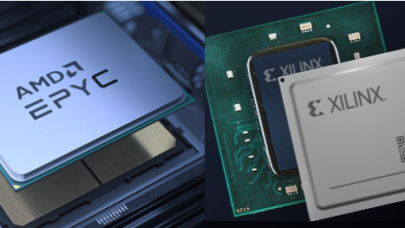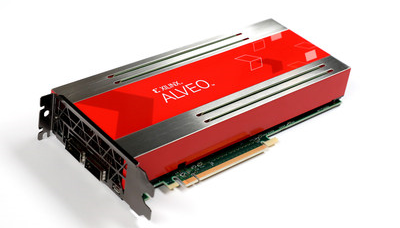
Public and Private Sectors Team up to Solve HPC Software Problem
November 15, 2023
Software implementation in high-performance computing is getting more fragmented as organizations opt for tools in their walled garden environments. Howeve Read more…

What’s New in HPC Research: HipBone, GPU-Aware Asynchronous Tasks, Autotuning & More
March 10, 2022
In this regular feature, HPCwire highlights newly published research in the high-performance computing community and related domains. From parallel programmin Read more…

AMD/Xilinx Takes Aim at Nvidia with Improved VCK5000 Inferencing Card
March 8, 2022
AMD/Xilinx has released an improved version of its VCK5000 AI inferencing card along with a series of competitive benchmarks aimed directly at Nvidia’s GPU line. AMD says the new VCK5000 has 3x better performance than earlier versions and delivers 2x TCO over Nvidia T4. AMD also showed favorable benchmarks against several Nvidia GPUs, claiming its VCK5000 achieved... Read more…

AMD-Xilinx Deal Gains UK, EU Approvals — China’s Decision Still Pending
July 1, 2021
AMD’s planned acquisition of FPGA maker Xilinx is now in the hands of Chinese regulators after needed antitrust approvals for the $35 billion deal were receiv Read more…

Heterogeneous Computing Gets a Code Similarity Tool
July 31, 2020
A machine programming framework for heterogeneous computing championed by Intel Corp. and university partners is built around an automated engine that analyzes Read more…

What’s New in HPC Research: Sky Surveys, HIV Research, HPC ‘First Contact’ & More
November 27, 2019
In this bimonthly feature, HPCwire highlights newly published research in the high-performance computing community and related domains. From parallel programming to exascale to quantum computing, the details are here. Read more…

What’s New in HPC Research: Transfer Learning, Radio Astronomy, FPGAs and More
September 12, 2019
In this bimonthly feature, HPCwire highlights newly published research in the high-performance computing community and related domains. From parallel programm Read more…

Xilinx Moves FPGAs Deeper into Datacenters
October 17, 2018
Three Chinese infrastructure vendors are embracing FPGA technology as a way of accelerating datacenter workloads. FPGA specialist Xilinx Inc. announced during a developer forum in Beijing this week that Alibaba Cloud, Huawei and server vendor Inspur are rolling out datacenter platforms based on the chip maker’s FPGA-as-a-service model. Among the datacenter workloads being targeted is AI inference, the partners said Tuesday. Read more…

- Click Here for More Headlines

Whitepaper
Transforming Industrial and Automotive Manufacturing
In this era, expansion in digital infrastructure capacity is inevitable. Parallel to this, climate change consciousness is also rising, making sustainability a mandatory part of the organization’s functioning. As computing workloads such as AI and HPC continue to surge, so does the energy consumption, posing environmental woes. IT departments within organizations have a crucial role in combating this challenge. They can significantly drive sustainable practices by influencing newer technologies and process adoption that aid in mitigating the effects of climate change.
While buying more sustainable IT solutions is an option, partnering with IT solutions providers, such and Lenovo and Intel, who are committed to sustainability and aiding customers in executing sustainability strategies is likely to be more impactful.
Learn how Lenovo and Intel, through their partnership, are strongly positioned to address this need with their innovations driving energy efficiency and environmental stewardship.
Download Now
Sponsored by Lenovo
Whitepaper
How Direct Liquid Cooling Improves Data Center Energy Efficiency
Data centers are experiencing increasing power consumption, space constraints and cooling demands due to the unprecedented computing power required by today’s chips and servers. HVAC cooling systems consume approximately 40% of a data center’s electricity. These systems traditionally use air conditioning, air handling and fans to cool the data center facility and IT equipment, ultimately resulting in high energy consumption and high carbon emissions. Data centers are moving to direct liquid cooled (DLC) systems to improve cooling efficiency thus lowering their PUE, operating expenses (OPEX) and carbon footprint.
This paper describes how CoolIT Systems (CoolIT) meets the need for improved energy efficiency in data centers and includes case studies that show how CoolIT’s DLC solutions improve energy efficiency, increase rack density, lower OPEX, and enable sustainability programs. CoolIT is the global market and innovation leader in scalable DLC solutions for the world’s most demanding computing environments. CoolIT’s end-to-end solutions meet the rising demand in cooling and the rising demand for energy efficiency.
Download Now
Sponsored by CoolIT
Advanced Scale Career Development & Workforce Enhancement Center
Featured Advanced Scale Jobs:
HPCwire Resource Library
HPCwire Product Showcase
© 2024 HPCwire. All Rights Reserved. A Tabor Communications Publication
HPCwire is a registered trademark of Tabor Communications, Inc. Use of this site is governed by our Terms of Use and Privacy Policy.
Reproduction in whole or in part in any form or medium without express written permission of Tabor Communications, Inc. is prohibited.
























